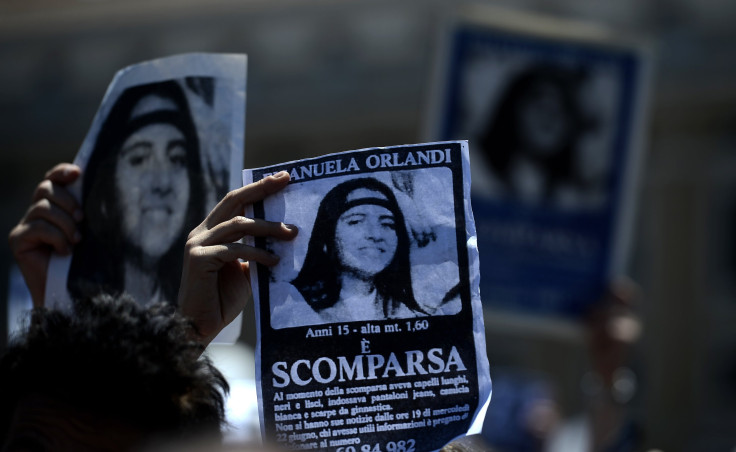Who Is Emanuela Orlandi? Bones From Vatican Embassy Might Solve 1983 Case

The human bone fragments discovered by workers at the Holy See Embassy to Italy could be linked to the mysterious disappearance of a 15-year-old girl in 1983, Italian media reported.
The remains were found during restructuring work on an annex to the embassy, located near Villa Borghese museum, Rome. Giuseppe Pignatone, the chief prosecutor on the 1983 case, said the forensic experts are yet to analyze the remains and determine its age, sex and date, to see if it matches the details of Emanuela Orlandi, daughter of a Vatican employee, who disappeared at the age of 15 in Rome on June 22, 1983, and whose remains were never found, Mirror Online reported.
Emanuela was one of the five children born to Ercole and Maria Orlandi. Her father was a clerk in the Vatican office that scheduled meetings with former Pope John Paul II. Shortly before her disappearance, she had finished her second year of high school.
On the fateful day, Emanuela went to attend music class at a school located in the St. Apollinaire palace next to Navona Square, Rome, wearing a white T-shirt, denim overalls and running shoes. When she got off the bus near her location, she was stopped by a man in a green BMW, Spanish outlet Comunidad de Ayala reported.
During the music class, Emanuela seemed distracted and left the lesson 10 minutes early. She called her sister Federica to tell her that a man offered her 375 liras ($200) to distribute pamphlets for Avon products at a fashion show that weekend and that he wanted to ask her parents for their permission to let her do the job.
Federica, who had some experience with working for Avon, told her sister to forget about the offer and return home as the former did not believe that the money being offered to her was for a two-hour job.
When Emanuela’s friends were boarding the bus to get back home, one of them saw her talking to a red-haired woman on the street. That was the last time anyone saw the 15-year-old as she never showed up to meet another sister of hers — Cristina — in a nearby piazza after her class as promised.
Three days after her disappearance, Emanuela’s family began receiving phone calls from a certain “Pierluigi” who claimed his girlfriend knew a girl who looked like their missing child. He said the girl who resembled Emanuela went by the name “Barbara” and sold cosmetics, and played the flute in Campo de' Fiori. That was the beginning of hundreds of false phone leads that the Orlandi family received for decades after Emanuela’s disappearance.
One of these calls was made by a man with an Anglo-Saxon accent, nicknamed “l’Americano” who demanded the release of Mehmet Ali Ağca, the Turk who had shot and wounded the Pope in 1981. In the phone call made to the Vatican, the man warned: “For the return of the girl the pope must obtain the liberation of Ağca from the Italian government before July 20.” Similar calls were made to the Orlandi family, and the Italian news agency, Ansa.
According to the Spectator, one of the well-intentioned but ill-fated decision by Pope John Paul II was to say, “I am close to the Orlandi family…” confirming his closeness to the missing girl, during his public appeal on July 3, 1983, which made Emanuela’s disappearance global news.
It possibly made the kidnappers realize the importance of Emanuela and raised the stakes, and hence reduced the chances of her returning safely back to her family.
“I deliver my prayer to the Lord so that Emanuela can return home soon, unharmed, and embrace the loved ones who await her with indescribable pain,” the Pope added.
Over the last 25 years, there have been other leads in the case, but Emanuela’s disappearance was never solved.
© Copyright IBTimes 2024. All rights reserved.





















